Ys: Memories of Celceta (PlayStation 4) Review
By Renan Fontes  09.06.2020
09.06.2020

Dating back to 1987, Ys is one of the oldest RPG franchises still active. Establishing itself from its contemporaries at the time, Ancient Ys Vanished made use of Bump Combat - a battle system which emphasized non-stop, button-less action by having protagonist Adol damage enemies on contact. Bump Combat would define the series' early years before the implementation of the Napishtim Engine. Introduced in Ys VI: The Ark of Napishtim, the Napishtim Engine traded button-less action for skill and reflex-based hack 'n' slash swordplay. The Napishtim Engine would only see use for three entries, before being replaced by the Seven Engine, the system which all modern Ys games are built from. While Ys Seven formally introduced party-based combat to the franchise, the Seven Engine owes its gameplay nuances to Memories of Celceta.
Falcom's early history with the Ys franchise is extraordinarily fascinating. Between countless ports of the original duology, Ys III stylizing itself after Zelda II: The Adventure of Link, and Ys V on the Super Famicom taking as many steps back as it did forward, the series has always found unique ways to reinvent itself. One of the most novel would have to be Falcom's approach to the fourth entry. Rather than developing Ys IV themselves, Falcom commissioned two separate studios to develop two versions of the game. With only the same basic story beats to build off of, Hudson Soft and Taito began development of their respective sequels. The former's work resulted in The Dawn of Ys for the PC-Engine, a game which very much felt like a mechanical sequel to Ys I & II while bringing the Eldeen arc to a premature close. Comparatively, Taito's Mask of the Sun on the Super Famicom stuck closer to Falcom's intended storyline, albeit losing much of Bump Combat's flavour in the jump from the PC-Engine to SNES.
Although Mask of the Sun would specifically be remade for the PlayStation 2, the fact of the matter is that Ys IV has always existed as an anomaly in the context of the franchise - both in universe and out. From a developmental standpoint, it's simply worth noting how Falcom designated a mainline entry to other studios, but the approach actually speaks to how the series frames itself. With the exception of Ys Origin - a prequel set centuries before the duology - the series exclusively focuses on Adol Christin's career as an adventurer during a fictionalized Age of Discovery. While it's not always explicit, each entry can be interpreted as one of Adol's many travel journals. This in turn not only explains why Adol's life story is told in anachronistic order (each new game is a new journal being found), but discrepancies between re-releases, ports, and remakes (each new iteration a reinterpretation of Adol's travelogues). It's a charming way for Falcom to frame the franchise, but it's one that is rarely, if ever, important. Or at least this was the case until it came time to remake Ys IV. Rather than simply picking Mask of the Sun or The Dawn of Ys to build off of, Falcom clearly took a considerable amount of care with approaching the remake - not only because of how complicated the fourth instalment's history is, but likely due to the significance of Falcom finally developing its own version. Ys: Memories of Celceta is more than just a remake, it's a re-contextualization of the franchise's origins.
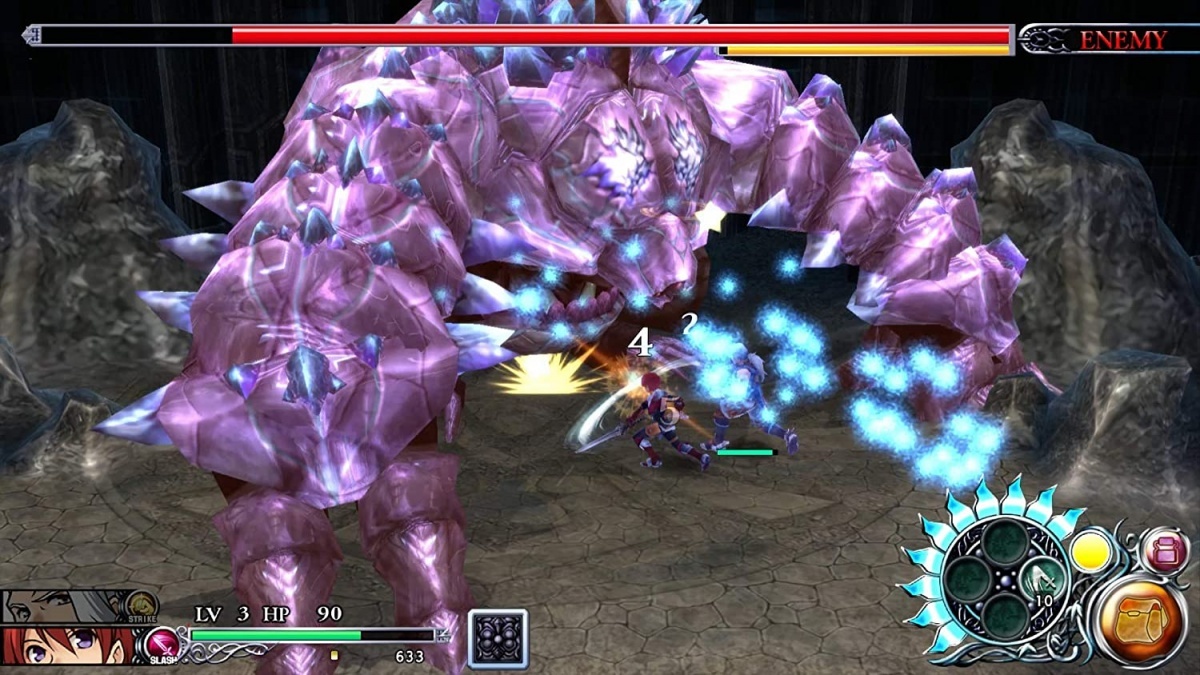
It's important to note that Memories of Celceta originally released in honour of Ys's 25th anniversary, and as a result features various references to the series as a whole. At the same time, Falcom used this opportunity not just as a means of celebration, but reintroduction. Although Memories of Celceta is set one year after the events of Ys II, Adol spends the entire journey an amnesiac, allowing the story to comfortably reintroduce established concepts for a modern audience: specifically Adol's inherent love of adventure, the Eldeen's divine role in the series' lore, and the nuances which govern the world's political happenings. The key tenets which define the franchise are on full display, but they aren't the focus. They're flavour, showing newcomers how alive Adol's world is without overwhelming them with information. As the story takes place so early in Adol's life (and with the character lacking his memories), there's no urge to directly reference specific events. Series veterans will pick up on the many Easter Eggs and nods to other titles, but they're all subtle. World-building has always been one of strong suits of Ys, and Memories of Celceta merely capitalizes on that fact.
Adventure is at the heart of the series, so the 25th anniversary title reinforces it. Even with amnesia, Adol's love of adventure surfaces, driving the main plot as he searches for his lost memories and maps the foliage ocean that is Celceta. Adol's journey is kicked off when he's commissioned by Governor General Griselda to map the Great Forest of Celceta, but this is mainly to frame gameplay. There's always much to explore and find on a typical day in Adol's life, but the mapping system puts exploration front and centre. Rather than Adol starting with a detailed map, he fills it out as the player explores the overworld and dungeons - more or less an adoption of classic metroidvania mapping, complete with a percentage tracker. Map completion is rewarded in increments of 10 percent, with Griselda offering progressively larger sums of gold. Reporting back to her regularly is the most consistent way of making money, but there are plenty of other valuables to find across the Great Forest of Celceta. This is a lush setting, with plenty of mini-dungeons, secrets, and rich imagery. While Celceta is indeed a forest, there's more than enough visual variety throughout. Most areas feature branching paths and multiple exits, along with plenty of treasure chests and harvest points to obtain new items and materials from. Complete with shortcuts to find, Celceta makes for a strong overworld.
Certainly helping matters is the Great Forest's excellent visual design. Beyond biome diversity within the forest itself, particular credit needs to be given to the copious amount of landmarks throughout. Mini-dungeons are always recognizable, and even the smallest sections of Celceta are aesthetically distinct. Level design is so visually driven, it's easy to neglect the mini-map early on. Something does have to be said for how the mini-map reveals pathways that would otherwise be subtly hidden, but the juiciest secrets still need to be found through genuine exploration. The Great Forest of Celceta is fairly large, but Adol isn't expected to walk to and from everyone on foot. Mystical stone monuments are scattered across Celceta and inside of its dungeons, serving as warp points. Initially, Adol can only warp between monuments of the same colour, but come the halfway point and he gains access to freeform warping at any time. Warping isn't anything new for the series, but it's structured and paced well so as to incentivize exploration in the first half before easing up on the need for backtracking in the second.
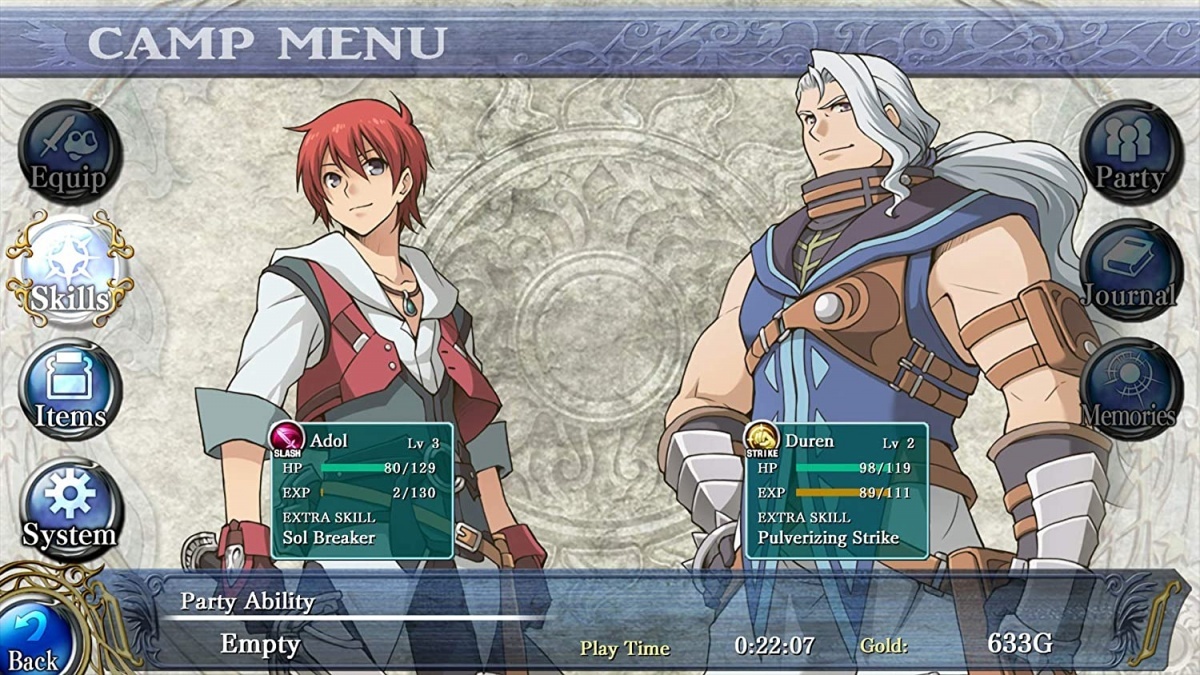
Adol naturally can't access the entire forest right away, but artefacts found inside of dungeons make navigating the overworld easier. The Hydra Scales allow Adol to swim and breathe underwater, the Gale Shoes turn Adol's run into a full-on dash, and the Beast King's Claw replaces Adol's dodge with a charged attack that can break through barriers. Characters also have their own personal abilities to play with on the overworld. Adol in particular can regain his lost memories by interacting with any blue (and later red) points of light. Adol's memories range from plot development to a legitimate character study of who Adol Christin is, and what defines him as an adventurer. Adol's memories mark some of the most intimate characterization in the series, offering the silent protagonist written dialogue for the first time in decades. Memories tend to be exclusively found in the overworld, with only a few exceptions - though this is only fair, as dungeons are primarily combat centric. Mini-dungeons are on the simpler side, usually only one or two rooms, and typically tied to side quests. They're explorable as soon as they're found, but lack events or bosses unless the party has accepted the appropriate quest. Dungeons are progressively more complex - taking cues from the Great Forest's labyrinthine structure - but dungeon quality doesn't live up to the Great Forest's right away. The Ancient Burrow and Sacred Beast's Lair can be done in either order, but they're fairly lacklustre in terms of content and context.
Until a little past the halfway point, every single time Adol visits a town is accompanied by a series of lengthy cut-scenes, before forcing players to speak to virtually every NPC in the new town (instead of letting them explore on their own), before capping off with even more cut-scenes - only then giving control and agency back to the player. Perhaps it's fair for Memories of Celceta to lock the player in every now and then, but this structure is aggressively boring up until the halfway point. Finding a new town or settlement should be a momentous occasion in an exploratory-heavy title, but they tend to be the action RPG's worst moments, killing the pacing on the spot. Finally being able to access the new dungeon is great, but the Ancient Burrow and Sacred Beast's Lair are not good first impressions. If nothing else, the dungeon design does progressively improve, getting better and better until the end of the game. By the Underground Ruins (a little before the halfway point), any level design quirks have ironed themselves out. The earlier dungeons feature light puzzle solving and a greater emphasis on exploration - complete with "keys" for "boss doors," but this is similarly thrown away by the halfway point. The focus instead remains on the combat, with each dungeon featuring an excellent balance of enemy variety and enemy placement that has become a signature for Ys, along with the franchise's always excellent music.
The heart and soul of the Seven Engine are skill based-battles, much like the Napishtim Engine, but it's far more accessible on a whole, with gameplay akin to a modern action RPG than a hack 'n' slash title. Adol may no longer have a shield, but he remains a swordsman, and the best overall playable character. Refusing to attack allows Adol to passively ready a charged attack which can then be chained into his regular four-hit combo. Adol is a fast, heavy hitter, with more than enough range to tackle anything and everything in his path. Along with the rest of the cast, Adol has access to Flash moves. By blocking the instant an enemy makes contact, Adol will trigger a Flash Guard, restoring his SP and allowing players to immediately transition into skills. Similarly, dodging right before an enemy makes impact triggers a Flash Move where Adol enters a bullet time-esque state and can rapidly attack enemies. Along with gold, all enemies drop materials. Together, gold, and materials can be used to upgrade weapons and armour. Status effects can be added onto Adol's swords (and are actually useful), while armour can be upgraded to restore HP, SP, or just prevent poison, paralysis, or other negative effects. Weapons and armour can be reinforced over and over again so long as players have enough gold and materials, but the more refined a piece of equipment is, the more expensive upgrading becomes. Weapons and armour can be reinforced into each other, inheriting properties. That said, it's no fun spending an obscene amount of money on a weapon only to have it immediately outclassed by the next town, so be mindful of that feature.
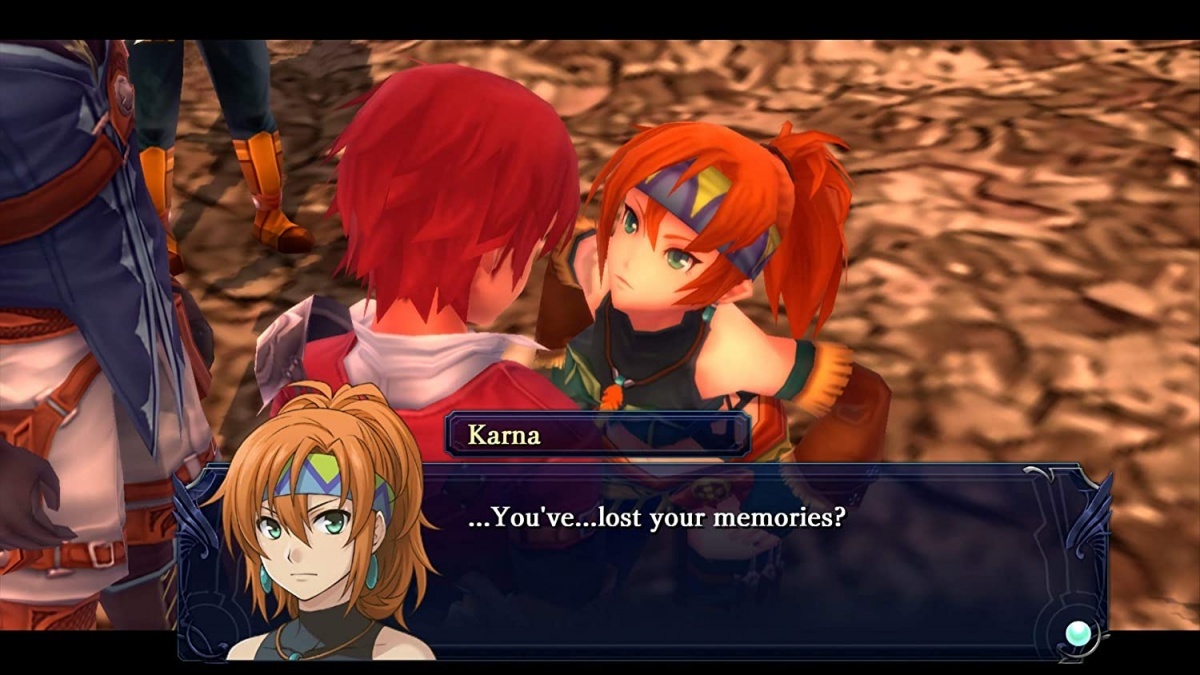
While every character naturally has their own health pool, SP is shared amongst all active party members. There are a number of accessories that help with SP restoration, but the most reliable methods a player has are charged attacks and Flash Guards. Every party member can equip four Skills at any given time, and since they tower above every character's individual combo chain, using Skills becomes the name of the game. By holding R1 Skills can be triggered by pressing the controller's face buttons. Where they're set is fully customizable and at the complete discretion of the player. More importantly, Skills level up the more they're used, incentivizing players to use a wide variety of their Skills. Since new Skills are also learned by using Skills, the audience is encouraged to use their full toolkit as often as possible. In the same way attacking builds up the SP meter, using Skills builds up the EXTRA gauge. A golden orb next to the SP meter, party members can trigger their EXTRA Skills as soon as the orb is full by pressing L1 and R1 together. EXTRA Skills are consistently the strongest abilities at a player's disposal, and often rip through boss health. With that in mind, it should be noted that bosses have quite a lot of health. They aren't exactly health sponges, since every boss features a well telegraphed set of moves (along with distinct phases most of the time), but it can occasionally feel as though Adol is doing little damage. This isn't really the case, and bosses should be seen as endurance matches which test a player's dexterity and stamina. All the same, series veterans should play on Hard. Normal may be stimulating, but gameplay never becomes particularly challenging.
Although players can only control one character at a time, party members can be given basic directions with the Right Analogue. 'Up' sets party AI to offensive, making them instigate enemies, whereas 'Down' sets party AI to evasive and outright stops them from attacking. As far as party tactics go, the offensive and evasive options aren't that in-depth, but they get the job done. Notably, flicking party members to evasive, more or less makes combat a solo endeavour - perfect for the older fans who miss Adol's lonelier adventures. Of course, this can also be used as a means to give attention to characters other than Adol. Beyond giving Adol a party, the Seven Engine's combat is designed specifically around the Slash/Pierce/Strike mechanic. Enemies have rock-paper-scissor-esque vulnerabilities, and each character is associated with either Slash, Pierce, or Strike. Soft-bodied enemies are often susceptible to slash, airborne enemies to pierce, and hard-bodied enemies to Strike. Ys Seven made it so that party member-switching was outright mandatory to kill specific enemies, but Memories of Celceta shows mercy and makes it so Adol, a Slash-type character, can kill anything and everything comfortably. There's no real need to switch party members other than to use their overworld abilities.
Adol may be the best overall party member, but everyone is fun to play, even if they aren't the series' best written characters. Duren serves as Adol's voice, so to speak, filling in dialogue and moving the basic plot along to accommodate Adol's silence. In terms of characterization, Duren is a poor man's Dogi - Adol's stalwart companion. Duren has an interesting enough background that comes into play during the last end, but it feels wasted on what amounts to an imitation of a better character. Gameplay-wise, Duren is quite strong, making use of Strike-type martial arts in combat. He has a basic three-hit combo, the least of any party member, but his Skills hit the hardest. As Duren can pick locked chests, there's reason to incentivize him in the party over other characters. The most compelling member in the party, Karna is the daughter of Comodo village chief. When her brother Remnos is spirited away, she joins Adol to find him. Karna fights with throwing knives, pulling off a speedy five-hit combo in the process. Pierce-type, Karna's Skills naturally target aerial enemies, but she can also inflict poison and paralysis on foes. Karna's overworld ability allows her to shoot her throwing knives at vines, making shortcuts inside of dungeons or on the overworld. Vine cutting doesn't see much play, but it's the most practical ability in regards to exploration.
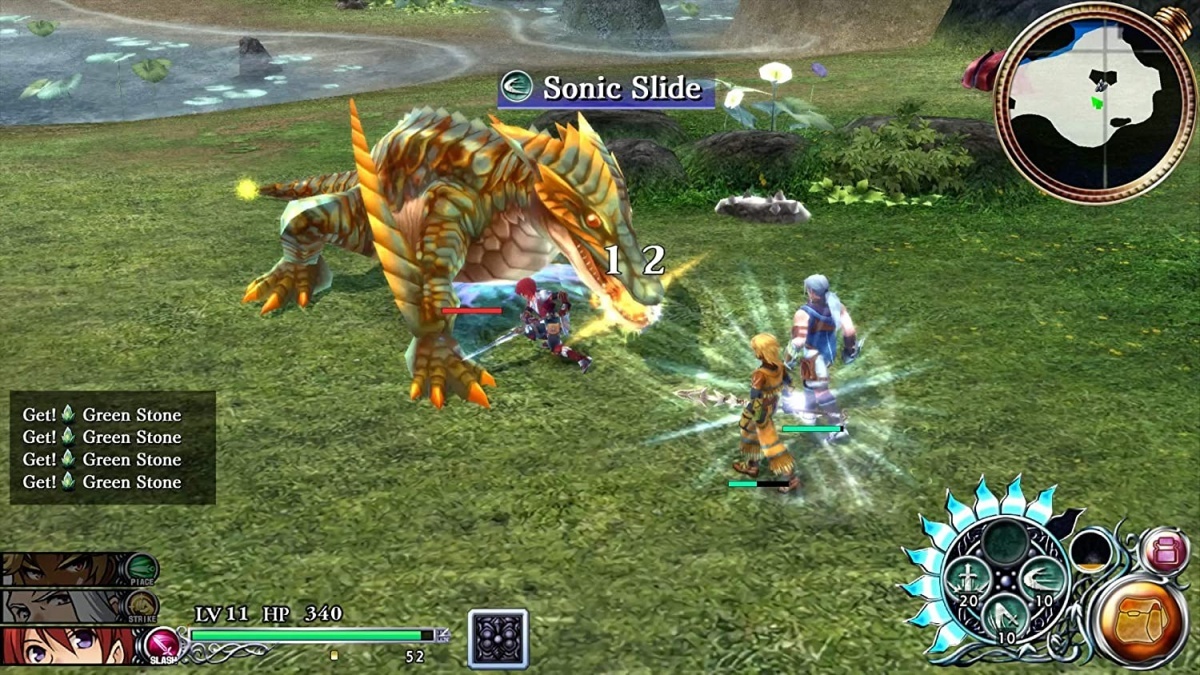
Ozma is positioned as a foil of sorts for Karna - Selray's young village chief and the last member of his tribe - but he's a fairly flat character. Ozma is likable, but only in the most surface level of ways. His personality is dryer than cardboard, and his stoic character doesn't land in large part due to Ozma lacking more definable traits to round him out. Like Karna, Ozma is a Pierce-type character, but he fights with a spear. His five-hit combos start with two slow stabs before Ozma breaks into a three-hit flurry. Playing as Ozma might seem "off" at first, but his Skills allow him to buff defence, and his range is useful. Unfortunately, his overworld ability is almost worthless. Breaking down walls underwater is simply too situational, and the swimming isn't that refined to begin with. Calilica has no real place in the plot, and is only in the party as a means to exclude Leeza - a character who has actual thematic and narrative relevance. Along with being underwritten, Calilica's chemistry with the main cast is virtually non-existent. Most of her interactions are with Duren, and they're filled with humour that falls flat. Nothing offensive, just painfully bland. That said, Calilica justifies her inclusion by being one of the best party members in the game. An incredibly fast Strike-type with a seven-hit combo, Calilica's mace rivals Adol's sword in terms of fun factor. Her Skills can stun enemies, spawn gold, and tend to simply cover wide areas. She may be a narrative nuisance, but Calilica is beyond useful.
Joining right as the last act starts, Frieda rounds out the party as the alternate Slash-type. She isn't as useful or fun as Adol, but Frieda has her role in the party. Her four-hit combo matches Adol's and is slower, but her Halberd's wide arcs give her better range. Frieda can also buff the party's strength and has some of the most unique Skills in the party, offering plenty of combat variety. That said, Frieda isn't used all that well in terms of narrative. Coming in so late naturally plays a role here, but Frieda is about as bland as Duren in terms of characterization. She has a compelling role in the story (and in the series' lore), but is far from a compelling character. In terms of character dynamics and personalities, this is the worst party of Ys. They get the job done, but there's little to chew on in terms of character development. Karna is the clear standout, and all the love Adol's backstory gets is admirable, but the former is an exception to the rule and the latter is tied directly to the memories mechanic, not the base narrative. The script itself is well written, but the story is ultimately disappointing. Adol's amnesia is fine framing, but the plot gets off to a weak start. Like with the dungeons, the story progressively gets better until the halfway point where the plot starts really moving. There's even a nice transition into the last act and some good player driven build-up, but it all falls flat.
The end of the game is less an ending, and more a full stop that squanders an otherwise gripping finale. Character arcs are left in flux, plot threads are unresolved, and a distinct lack of resolution is invoked. For better or worse - mainly for worse - the story chooses to end on a note that reflects the spirit of Adol's adventure, that the audience can only get a glimpse of what he experienced… which, frankly, is a fairly lousy note to end on. Falcom wants the audience to embrace the inherent mystery of Adol's life in a title that up to that point intimately unravelled his mysterious background. The narrative on a whole feels thematically at odds with itself, even independent of the ending, but all things considered, the story serves as a comfortable entry point for newcomers. As disappointing as the ending is, Memories of Celceta does shine a spotlight on what the franchise's narrative priorities are, making it very easy for newcomers to jump to just about any title after finishing their play-through. It doesn't make for compelling storytelling, but there's consistently strong world-building from start to finish that helps put into perspective how fleshed out Ys' world really is. More importantly, the gameplay only gets better. Between unlocking more Skills, party members, and the customization allotted by weapon upgrading, Ys: Memories of Celceta never loses its dynamic edge.
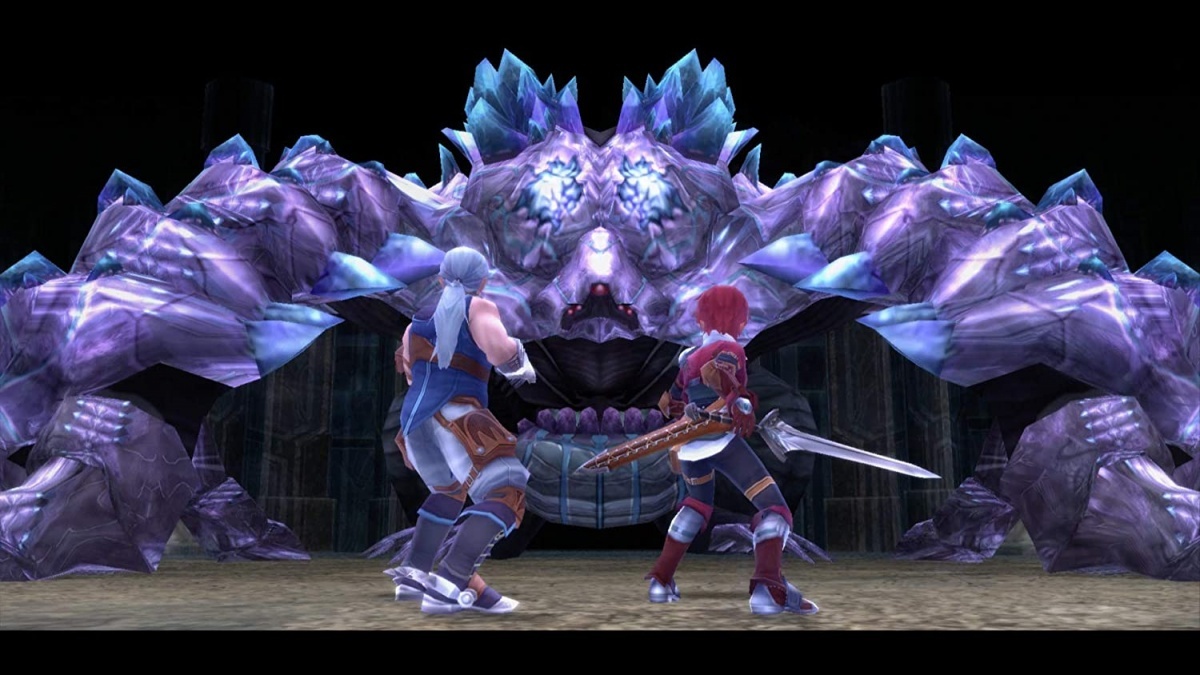
Cubed3 Rating
Great - Silver Award

In spite of an ending that leaves much to be desired, Ys: Memories of Celceta is a great action-RPG that re-contextualizes a decades-old franchise for a modern audience. Adol's adventure mapping out the Great Forest of Celceta is an excellent introduction for newcomers, and a competent re-release for series veterans. Complete with dual audio and 60fps gameplay, the PS4 release is the definitive version. On a design level, the opening hours aren't as strong as they should be, but after the halfway point this finds its groove. An emphasis on exploration, layered dungeon design, excellent boss fights, and a generous amount of customisation, keep combat gripping throughout. The title might not be the series best, but Ys: Memories of Celceta is a love letter to one of the RPG genre's premiere franchises.

Ys: Memories of Celceta
![]() 8/10
8/10
![]() 0
(0 Votes)
0
(0 Votes)
 None
None  None
None  None
None  None
None Comments
Comments are currently disabled

 Sign In
Sign In Game Details
Game Details Subscribe to this topic
Subscribe to this topic Features
Features





 Top
Top

